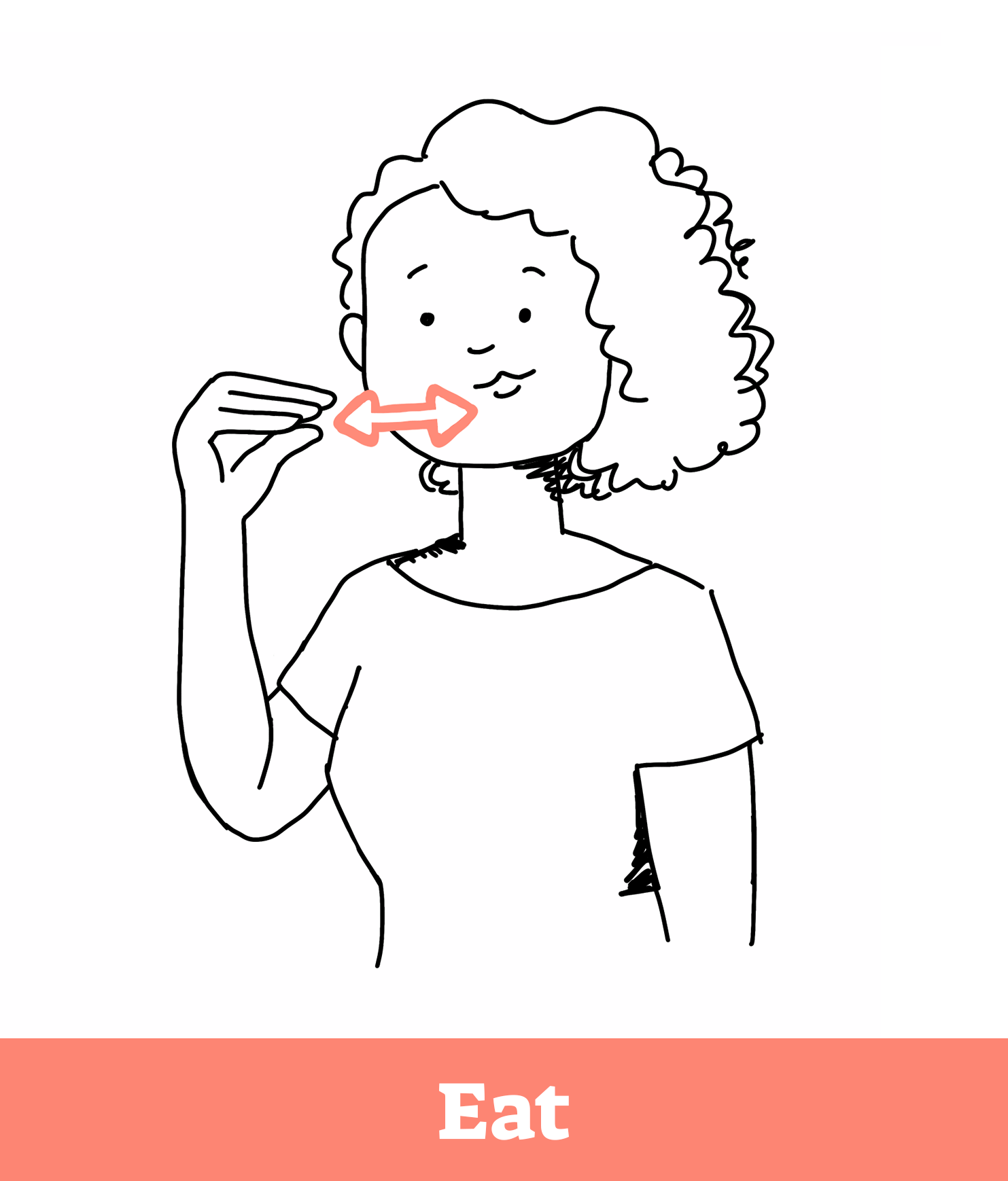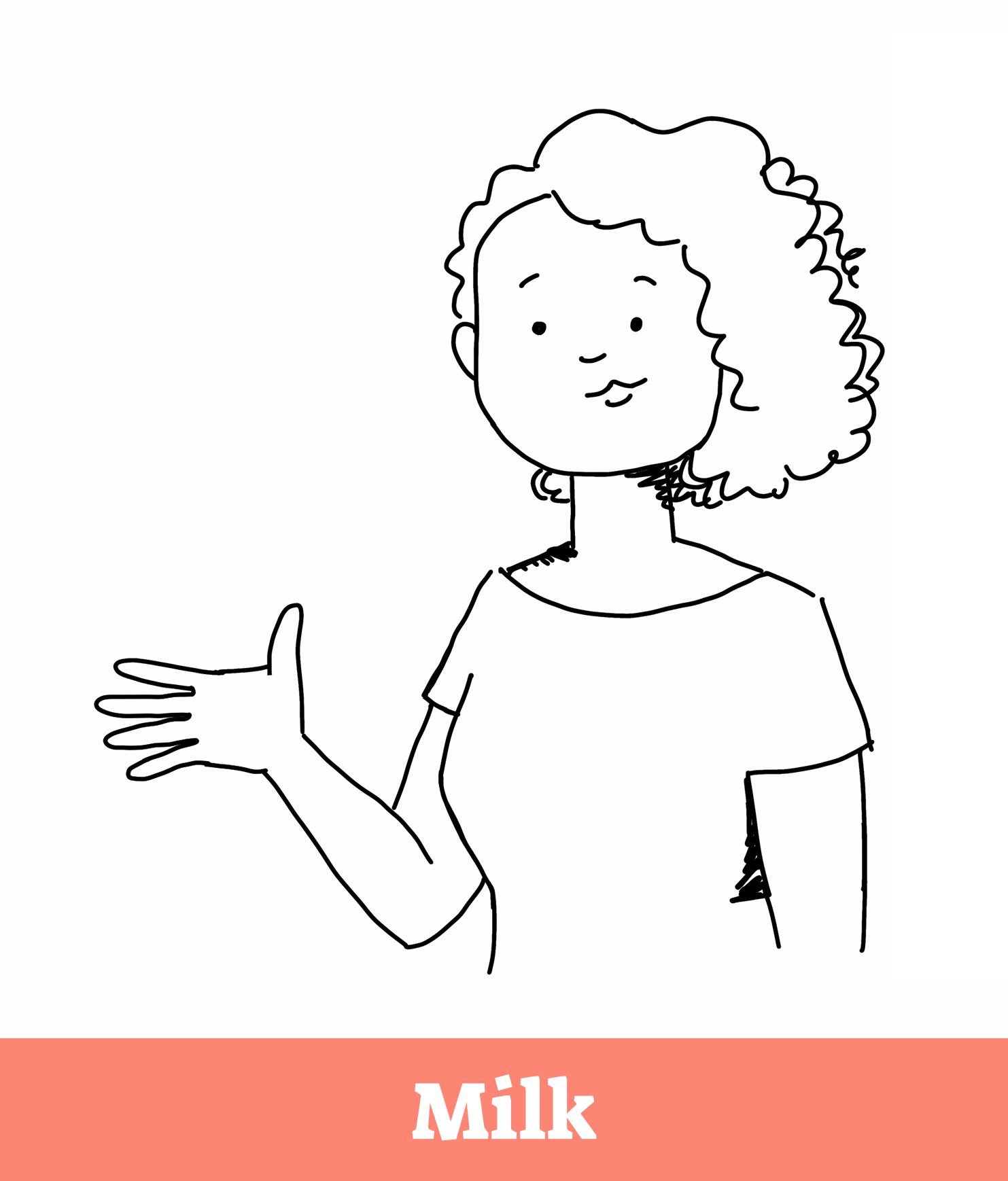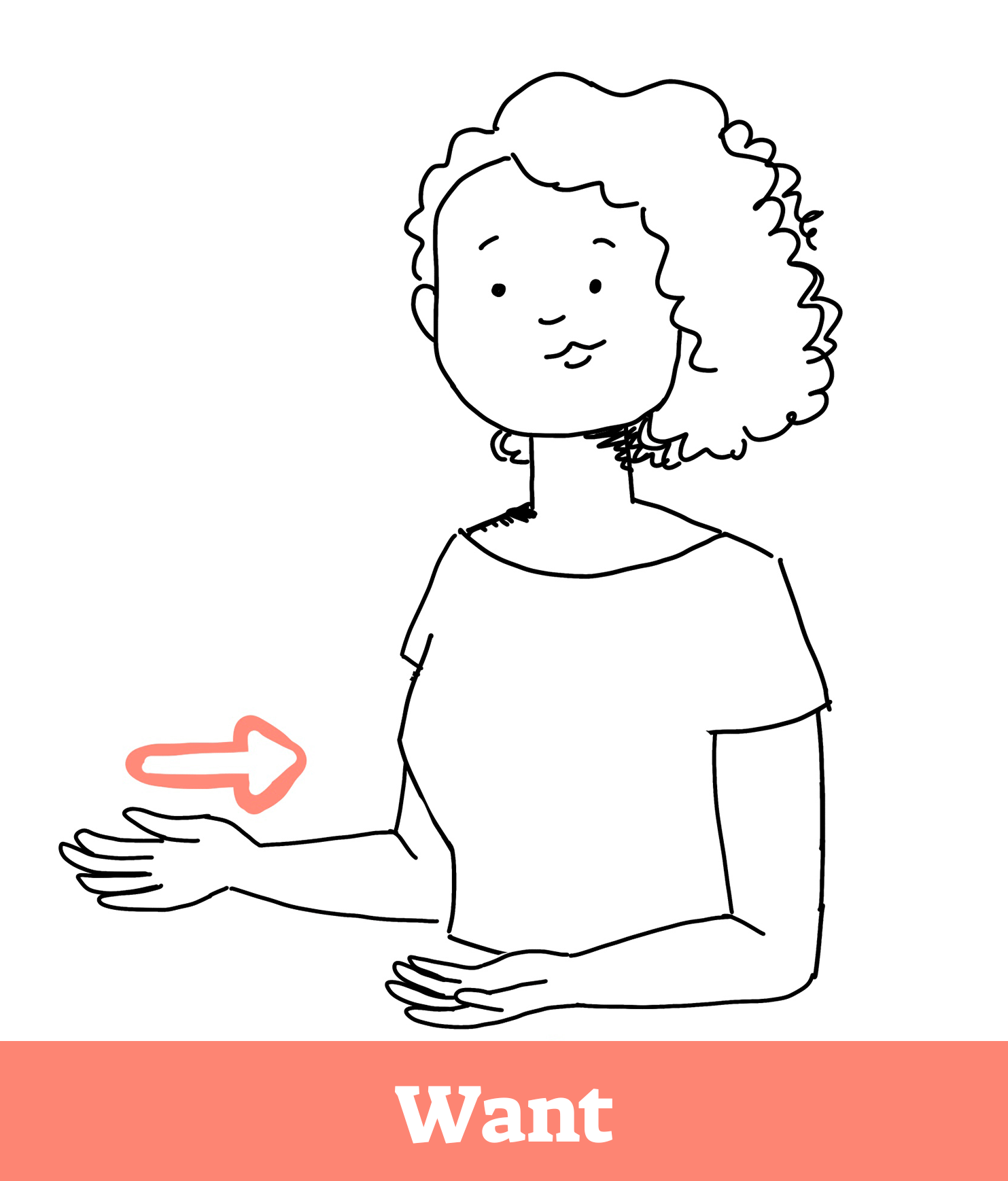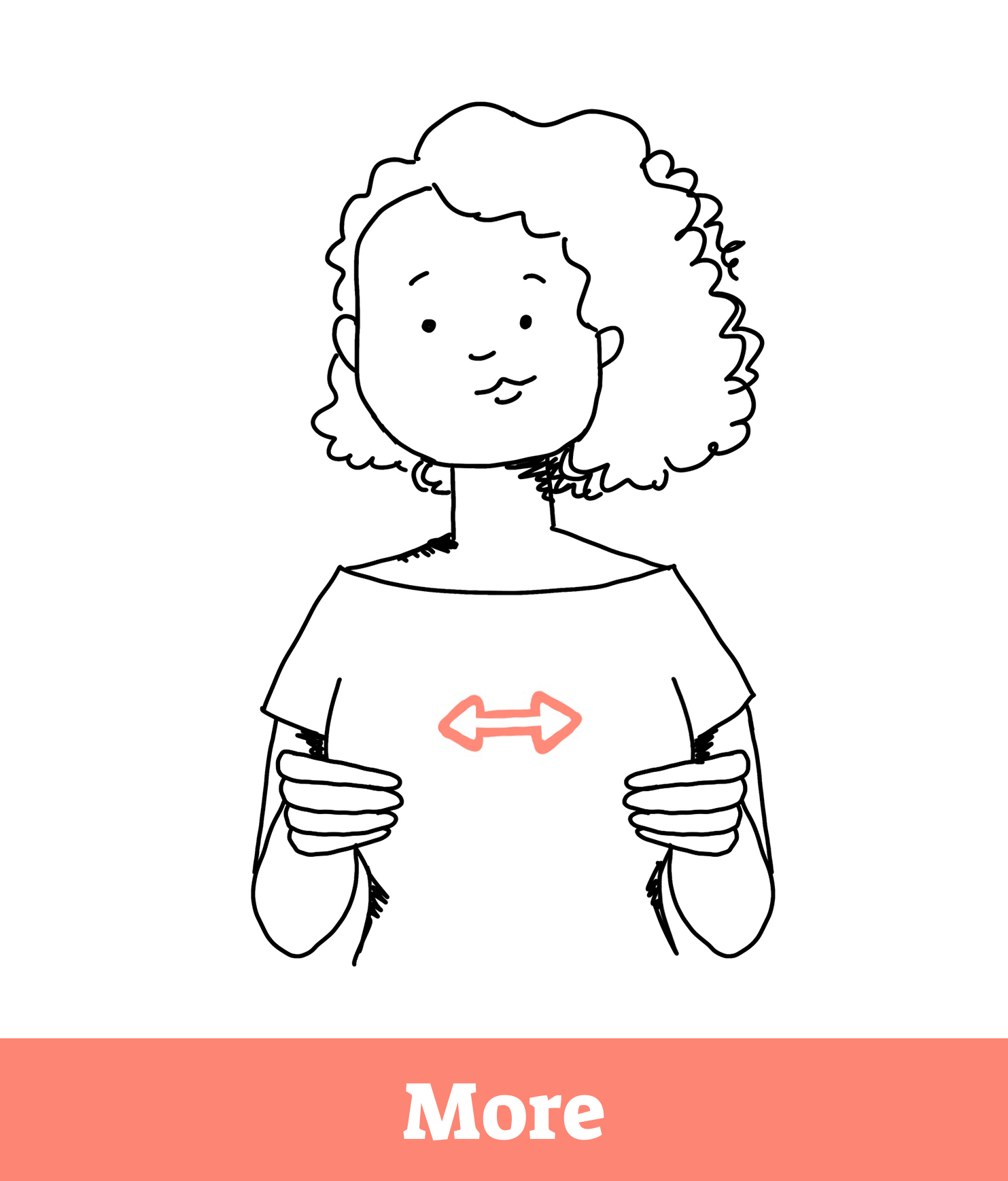Baby sign is a powerful technique that parents can use to communicate and bond with their baby before the baby learns to talk. Introducing baby sign is simple, and it’s not just for babies. Even toddlers who have already begun to use spoken words can benefit from signing. As a speech language pathologist, I’ve seen countless families use baby sign to build trust and two-way communication with their little ones. Here’s what you need to know to get started.
What is baby sign language?
Baby sign is a set of gestures that you teach your baby along with verbal words so that they can communicate their wants and needs. Baby signs are often borrowed from American Sign Language, or ASL, but typically modified to make them easier for little hands to recreate. These modifications include making the signs bigger or adding more repetition to help baby make them successfully.
Baby sign isn’t a strict academic pursuit; the goal is to provide a way for baby to communicate. It’s completely fine if a sign in your family doesn’t look like the traditional baby sign language or ASL sign.
What are the benefits of baby sign language?
Because babies can often learn to sign before spoken language develops, it’s a great way to empower them to communicate what they want or need before they can verbalize. Baby sign doesn’t replace verbal communication, it just gives babies more options to express themselves.
Benefits of baby sign include:
• Less frustration and fewer meltdowns. The ability to communicate what baby wants or needs can ease frustration and lead to fewer meltdowns. Even after your baby or toddler begins to speak verbally, signs can help them communicate more easily when they are in distress and it’s harder to articulate their feelings.
• A deeper bond between you and baby. With baby sign language, you can show your baby that you are tuning into their thoughts and wishes. Feeling heard in this way strengthens the bond between babies and their caregivers.
• Improved language growth. More interaction around language opens the door to more opportunities for language growth. This is true even for toddlers, who can boost language skills by putting signs and words together, and in bilingual households, where signs can bridge the gap between the two versions of the spoken word.
When should you start baby sign language?
Babies’ development starts with receptive language, or the ability to understand words, and eventually grows into expressive language, or the ability to express their wants and needs through verbal and non-verbal communication.
It’s never too early to begin signing to your baby. The earlier you begin to show them the signs, the sooner they will understand. On average, however, babies aren’t developmentally ready to put meaning to sounds, words, and signs until about six months of age. That’s why we typically recommend 6-8 months old as a great time to start using baby sign language consistently.
When will your baby start to sign back? Usually around 9-12 months, when most babies are physically able to make intentional gestures and controlled hand movements. But every child begins at their own pace, many after their first birthdays, so don’t worry and don’t quit if you haven’t seen a sign by the time they blow out their candles. It’s important to keep going even if they don’t sign back right away, as they will recognize your signs long before they will repeat them.
If you’re concerned about your baby’s language or physical development, don’t hesitate to reach out to your pediatrician.
3 steps to baby sign language success
I have found three strategies to be particularly useful in building the foundation for baby sign language success.
1. Timing.
Try to use baby sign language when baby is alert and happy. If they are tired or hungry, wait until after a meal, snack, or nap. We want baby to perceive signing as a fun, interesting experience, not something that adds stress or confusion.
2. Repetition.
Find as many opportunities as possible to use your signs. The more exposure baby receives to the signs, the more likely they are to recreate them. Always pair signs with words to help develop spoken words alongside baby sign language and foster language development.
3. Positive feedback.
Keep it positive! Even if baby’s sign or word doesn’t match your modeling, give them praise for their efforts. Babies will keep trying if you acknowledge their hard work. Instead of saying, “No, that’s not the right sign or word,” or “Not quite,” try to put a positive spin on it: “You tried to sign ‘more’!”, “You tried to put your hands up!”, or “I heard that sound, great try!” are all solid options.
Depending on their age and motor skills, your baby’s sign may look much different than the sign that you’re modeling. You may not even realize that they have signed back at first. That’s okay -- trust that it will happen, and remember that the important thing is that you and baby are communicating, not that the sign is perfect.
Which signs should you use to start?
Around 9-10 months, many babies can begin to sign using an “O” or “C” shaped hand. Signs that use that shape, therefore, are an excellent place to start. These include words like eat, milk, want, and more.




Frequently asked questions about baby sign
• How many signs should you teach your baby?
It’s completely up to you. Some parents choose to teach only a few signs, which can still go a long way towards helping you understand what your baby is communicating.
• What if your baby doesn’t start to sign back?
If you have been signing consistently for several weeks and your nine-months-or-older baby isn’t doing it back, try the hand-over-hand technique. To use hand-over-hand, place your hands over baby’s hands and show them how to use their hand to make the sign. The signs for “more” and “eat” can be easy for baby to perform and modify, so those can be good places to start.
Some babies prefer not to have their hands manipulated, which is just fine. Simply stay the course with modeling the sign as often as possible.
• Do signs count as part of baby’s word count?
Yes! As long as baby is using the same sign consistently for a word, it absolutely counts as part of baby’s word count.
• Why does baby sign some words and not others?
Just as babies may speak some words and not others, some babies are more comfortable with certain signs. Your baby may prefer some signs over others because they are physically easier to do or more meaningful to them. Don’t get discouraged if your baby isn’t learning every sign. Give them plenty of positive feedback for their signing efforts and keep practicing.
Baby sign is a wonderfully fun and effective way to bond and communicate with your baby. For more information, check out our Baby Sign: How to Support your Baby's Communication Skills (5-24 months) course, where you’ll find demonstrations of common signs, tips for teaching baby sign language, favorite songs with signs and more.

About our Expert
Stephanie Tuthill is an ASHA-certified Speech-Language Pathologist with a background in special education and deaf education. As a mom of three, she understands the importance of early development and is dedicated to supporting baby's communication skills. Stephanie has more than ten years of experience in pediatric therapy and degrees from Vanderbilt University and Northwestern University.



